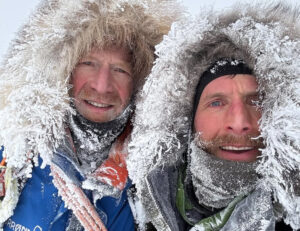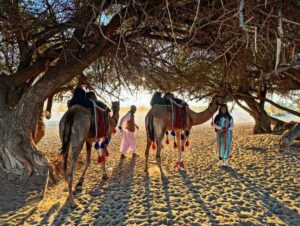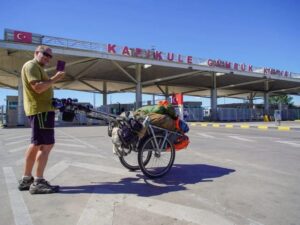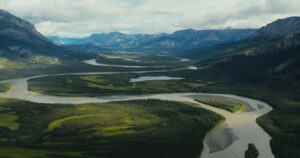Along with one distinctive Led Zeppelin song, the ravaging natural beauty of Iceland anchors the country in the popular lexicon. Lava flows, hot springs, glacial expanses, and meltwater lakes — they all proliferate in the land of fire and ice.
It’s become popular for tourists and trekkers alike. But at 500km from east to west, at an arctic latitude, don’t expect a casual winter traverse.
Just ask James Aiken, a multi-discipline athlete who recently used every tool in his considerable kit to punch out the challenge safely and rapidly.
Aiken packed a sled with every practical contingency from ski wax to ice axes and planned for 35 days on the 530km hump. When he pulled into Þorlákshöfn, an improvised endpoint due to a hazardous river crossing he encountered midway, he was 14 days ahead of schedule.
View this post on Instagram
“When I finally stashed my pulk to finish the trip, it still weighed 45 kg,” he said. “But it’s like that on a pulk journey. You begin with all the supplies you might need because all you know is that you have to be self-sufficient. What you don’t know is what will happen along the way.”
That can be especially true during winter in Iceland’s exposed highlands. Sudden squalls commonly create whiteouts, and North Atlantic wind can rip across the continent at almost hurricane force.
The terrain itself can also cause havoc. Spindrift makes fragile cornices that overhang countless cliffs in choppy lava fields. Snow bridges often provide the only practical river crossings, and deep snow can make a skier feel like they’re stuck in mashed potatoes.
‘Micro-navigation’
Aiken knew all this from one previous experience skiing across Iceland in winter, as part of a team in 2022. He also understood that planning and navigation would be critical. He’s an experienced skier, trekker, surfer, and especially sailor — which gave him a distinct orienteering edge.
View this post on Instagram
“I’ve sailed all my life, so I really love navigation. When I find myself in a semi-mountainous region in a whiteout, and it’s down to compass nav, I feel quite comfortable,” he said.
He explained that the ability to “micro-navigate” efficiently kept him safe and on schedule. Iceland’s compact, varied landscape can make for slow progress no matter what. And when snow cover makes some features obscure or invisible, the demand is much higher.

Photo: James Aiken
“A weird skill is looking at a map or chart and…to create a working reference of what the next hour is going to look like, so you’re not getting the map back out every three minutes. That way, you can keep your speed,” Aiken said, adding: “You’re dealing with all these little features in Iceland. So if you’re doing this in a white-out, you could quite easily ski off a five-meter drop.”
‘Expensive taxi’
Of course, Aiken didn’t rule out that some emergency could occur. But he wanted to avoid calling in a rescue at all costs.
View this post on Instagram
“Have you ever heard of The Coldest Crossing?” he asked me. “Four young English guys tried to ski across Iceland in winter, and they got rescued three times in two weeks. Unacceptable.”
Averse to endangering others, Aiken sought a stronger solution.
A previous partnership with Arctic Trucks gave him the safety cushion he needed. The company re-engineers 4×4 vehicles to perform in winter. Aiken arranged an option to call in a paid rescue with experienced drivers if he needed it.
“I essentially gave myself a very expensive taxi,” he joked. “But it was better than making people risk their lives.”
Ambitious but resourceful
It’s part of a pattern that proves Aiken’s recognition of social value — another faculty he said was key to his success. He kept an open line of communication (mainly via Garmin InReach) to friends at the Iceland Meteorological Office. They helped him corroborate upcoming weather events and even advised him on eruptive conditions at Lake Askja, which lies in the caldera of an active volcano.

Viti Lake (blue-green) and Oskjuvatn Lake (dark blue, background) in the Askja caldera. Photo: Creative Commons
“You can’t do these things without local knowledge,” Aiken said.
Not everything went according to plan. Weather and snow conditions a few kilometers from both ends of the trip prevented a full ocean-to-ocean unsupported traverse.
Forty-five-knot winds once broadsided him in his tent. That’s plenty to destroy or carry away equipment, and could be a disaster in a remote area. All Aiken could do was reorient his snow wall and hang on.
Later, he abandoned his original endpoint when a dicey snow bridge made one river crossing too perilous.
View this post on Instagram
For Aiken, the trip constitutes one more step in the right direction. A sensible adventurer, he’s more concerned with longevity than statistics. The joys of the outing revolved around the simplistic charms of life on the trail.
View this post on Instagram
“I want to be ambitious but resourceful at the same time,” Aiken said. “If you just keep pushing yourself a little bit each time, you really move forward. Then in ten years, you’ve achieved quite a lot.”






